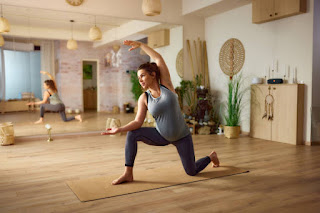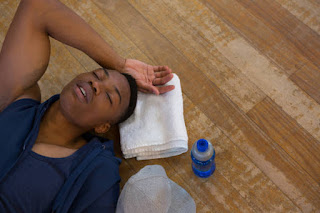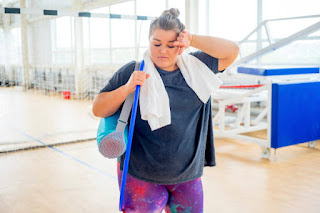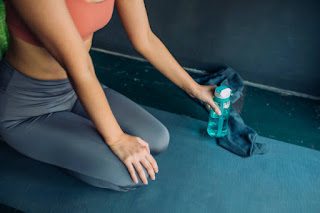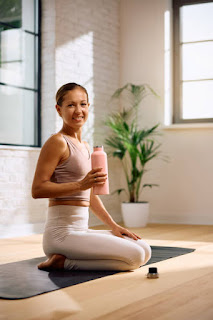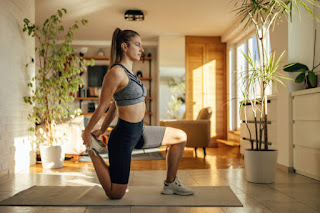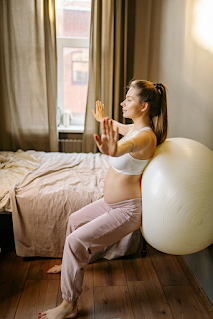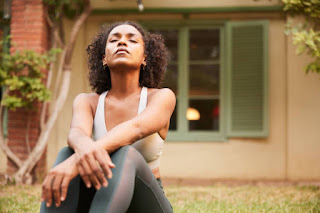Hot Yoga: Medical Benefits and Misconceptions
Hot Yoga: Unveiling the Medical Benefits and Debunking Common Misconceptions
Hot yoga, which typically takes place in a room heated to 90°F (32°C) or higher, has gained popularity for its intense, sweat-inducing practice. It combines traditional yoga poses with heat to increase flexibility, promote sweating, and intensify the workout. However, along with its appeal comes a mix of medical benefits and misconceptions.
Medical Benefits of Hot Yoga
Improved Flexibility: The heat helps warm up muscles, allowing for greater flexibility and range of motion. This can make poses that are normally difficult more accessible, reducing the risk of injury when done properly.
Enhanced Circulation: Practicing in a heated environment can boost heart rate and circulation, which may help deliver oxygen and nutrients more efficiently throughout the body.
Detoxification: Sweating is thought to help release toxins from the body, though the science behind this is not definitive. The heat encourages sweating, which may assist in flushing out some impurities.
Increased Calorie Burn: The intensity of hot yoga can lead to a higher calorie burn compared to traditional yoga. This can be beneficial for those looking to incorporate yoga into a weight-loss or fitness regimen.
Better Cardiovascular Health: The physical exertion and heat can provide a cardiovascular workout, improving heart health over time. Studies have shown that regular practice can lower blood pressure and improve vascular health.
Stress Relief and Mental Clarity: Like other forms of yoga, hot yoga promotes relaxation, reduces stress, and enhances mental clarity. The heat can add a meditative element to the practice, requiring focus and mindfulness.
Common Misconceptions About Hot Yoga
Detox Myth: While sweating can remove some water-soluble toxins, the liver and kidneys are the body’s primary detoxifiers. Sweating is not a major way the body gets rid of toxins, so the idea that hot yoga provides a significant detoxification effect is largely overstated.
More Sweat Equals More Fat Loss: Sweating more does not necessarily equate to burning more fat. The initial weight loss from sweating is primarily water weight, which is quickly regained through rehydration. Sustainable fat loss depends on calorie expenditure rather than just sweat.
Hot Yoga Is Suitable for Everyone: While many people enjoy the benefits of hot yoga, it is not appropriate for everyone. People with certain medical conditions, such as heart problems, low blood pressure, or heat sensitivity, may find the heat dangerous. It is important for individuals to consult with a healthcare provider before trying hot yoga, especially if they have underlying health concerns.
Heat Guarantees a Better Workout: The heat can increase perceived exertion, making you feel like you’re working harder than you actually are. While it does elevate heart rate and improve flexibility, the quality of a yoga workout depends more on the poses and alignment rather than just the heat.
Safety Tips for Hot Yoga
Stay Hydrated: Drink plenty of water before, during, and after the session to avoid dehydration. Electrolyte-rich drinks may also be beneficial.
Pace Yourself: If you’re new to hot yoga, take breaks when needed and don’t push your body beyond its comfort zone. It’s important to listen to your body and modify poses as necessary.
Know the Signs of Overheating: Symptoms like dizziness, headache, nausea, or confusion are warning signs of heat exhaustion. If you experience these, leave the room and cool down immediately.
Wear Appropriate Clothing: Lightweight, moisture-wicking clothing can help you stay cooler and more comfortable during practice.
Research and Evidence
Heart Health: Studies have shown that regular hot yoga practice can improve arterial stiffness, lower blood pressure, and contribute to overall cardiovascular health.
Musculoskeletal Benefits: A 2013 study published in the Journal of Strength and Conditioning Research found that hot yoga significantly improved balance, strength, and flexibility among participants.
Mental Health: Research suggests that yoga, in general, can lower cortisol levels and reduce symptoms of anxiety and depression. The added challenge of heat can increase focus and concentration, providing a mental workout alongside the physical one.
Considerations for Beginners
If you are trying hot yoga for the first time, start with a beginner-friendly class and inform the instructor about your experience level.
Gradually acclimate to the heat and avoid pushing yourself too hard, especially in the beginning.
Overall, hot yoga can be a beneficial practice for improving flexibility, cardiovascular health, and mental clarity, but it is important to practice safely and be aware of the potential risks associated with heat exposure.
Assess Your Health and Medical History
Heart Conditions: If you have heart issues, high blood pressure, or low blood pressure, hot yoga may not be safe. The heat puts extra strain on the cardiovascular system, so consult with a healthcare provider before attending a class.
Heat Sensitivity: If you are prone to heat exhaustion, heat intolerance, or have experienced dizziness or fainting in hot conditions, hot yoga may not be suitable for you.
Pregnancy: Pregnant women should be cautious with hot yoga. While some prenatal yoga classes incorporate gentle warmth, the extreme heat of traditional hot yoga may not be safe. It’s best to discuss with a doctor before participating.
Consider Your Fitness and Yoga Experience
Yoga Experience: If you are new to yoga, you may want to start with a traditional (non-heated) class to learn the poses and proper alignment. Once you feel comfortable, you can gradually transition to a heated environment if you’re interested.
Fitness Level: Hot yoga can be physically demanding. If you’re already physically active and have a good level of endurance, you may find hot yoga challenging yet manageable. If you’re just beginning your fitness journey, a gentler form of yoga might be a better starting point.
Evaluate Your Comfort with Heat
If you enjoy being in warm or hot environments, you may appreciate the heat in hot yoga classes. However, if you tend to feel uncomfortable, fatigued, or irritable in hot settings, hot yoga might not be enjoyable for you.
Try spending time in a sauna or heated environment to see how your body reacts before committing to a hot yoga class.
Check Your Hydration Habits
Hot yoga requires a lot of sweating, which means you need to stay well-hydrated. If you’re not great at drinking enough water throughout the day, you may want to pay extra attention to your hydration habits before trying hot yoga.
Make sure you’re comfortable carrying a water bottle and taking sips throughout your workout.
Reflect on Your Yoga Goals
Flexibility and Intensity: If your goal is to increase flexibility, improve cardiovascular endurance, or add intensity to your yoga practice, hot yoga might be a great fit.
Relaxation and Mindfulness: If your primary reason for practicing yoga is to relax, de-stress, or engage in gentle movements, you may prefer a restorative or traditional yoga class rather than the intensity of hot yoga.
Try a Trial Class
Many studios offer trial classes or introductory packages that allow you to experience hot yoga without committing to a full membership. This way, you can see how your body responds and whether you enjoy the experience.
Pay attention to how you feel during and after the class. If you feel energized and balanced, hot yoga could be a good addition to your routine. If you feel exhausted, dizzy, or unwell, it may not be the right choice.
Listen to Your Body
Hot yoga can be an intense experience, and it’s crucial to listen to your body. If you feel lightheaded, nauseous, or overheated, it’s important to take a break, hydrate, or even leave the room if necessary.
It’s perfectly okay to skip a pose, take breaks, or rest in child’s pose if you need to cool down during the class.
Personal Preferences and Enjoyment
Yoga should be a practice that you enjoy and look forward to. If the idea of sweating profusely in a heated room doesn’t appeal to you, it’s okay to skip hot yoga in favor of something that feels more aligned with your preferences.
On the other hand, if you love the idea of a sweaty, intense, and physically challenging workout, hot yoga could be a great fit.
Questions to Ask Yourself:
Do I feel energized or fatigued in warm environments?
Am I comfortable with sweating a lot during exercise?
Can I commit to hydrating well before and after class?
Do I want a physically intense and sweat-inducing yoga experience?
Am I free of any medical conditions that might make heat exposure dangerous?
Final Thoughts
Hot yoga can be incredibly beneficial for some people, offering a unique combination of strength, flexibility, and cardiovascular training. However, it’s not for everyone. The best way to know if it’s right for you is to try a class while staying mindful of how your body reacts and prioritizing your safety and comfort. Always consult with a healthcare provider if you have any health concerns before trying hot yoga.

